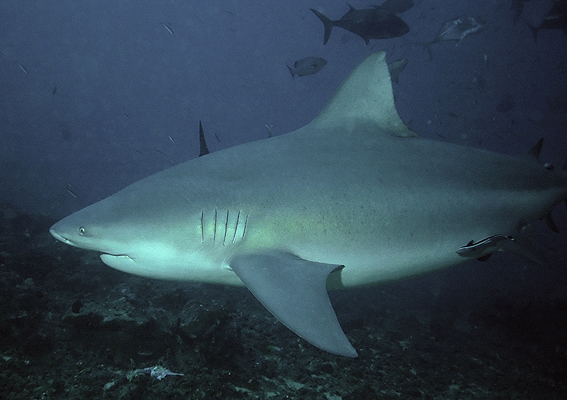Labeo rohita.JPG on:
[Wikipedia]
[Google]
[Amazon]
''Labeo'' is a genus of
An overview of labeonin relationships and the phylogenetic placement of the Afro-Asian genus ''Garra'' Hamilton, 1922 (Teleostei: Cyprinidae), with the description of five new species of ''Garra'' from Ethiopia, and a key to all African species.
''Zoological Journal of the Linnean Society'' 150(1), 41-83. The genus name ''Labeo'' is Latin for "one who has large lips". Labeos have the two barbels on the rostrum which are common among the Cyprinidae, and also another pair of barbels at the rear edges of the
carp
Carp are various species of oily freshwater fish from the family Cyprinidae, a very large group of fish native to Europe and Asia. While carp is consumed in many parts of the world, they are generally considered an invasive species in parts of ...
s in the family Cyprinidae
Cyprinidae is a family of freshwater fish commonly called the carp or minnow family. It includes the carps, the true minnows, and relatives like the barbs and barbels. Cyprinidae is the largest and most diverse fish family and the largest verte ...
. They are found in freshwater habitats in the tropics and subtropics
The subtropical zones or subtropics are geographical and climate zones to the north and south of the tropics. Geographically part of the temperate zones of both hemispheres, they cover the middle latitudes from to approximately 35° north and ...
of Africa and Asia.
It contains the typical labeos in the subfamily
In biological classification, a subfamily (Latin: ', plural ') is an auxiliary (intermediate) taxonomic rank, next below family but more inclusive than genus. Standard nomenclature rules end subfamily botanical names with "-oideae", and zoologi ...
Labeoninae, which may not be a valid group, however, and is often included in the Cyprininae as tribe Labeonini
Labeoninae is a doubtfully distinct subfamily of ray-finned fishes in the family Cyprinidae of order Cypriniformes. They inhabit fresh water and the largest species richness is in the region around southern China, but there are also species ...
. If the Labeoninae are accepted as distinct, Labeonini is the name of the tribe in this subfamily to which the labeos belong. If the Labeonini are considered a tribe of the Cyprininae, the labeos are placed in subtribe
Subtribe is a taxonomic category ranking which is below the rank of tribe and above genus. The standard suffix for a subtribe is -ina (in animals) or -inae (in plants
Plants are predominantly photosynthetic eukaryotes of the kingdom Plant ...
Labeoina.
The labeos appear fairly similar to the "freshwater shark  Freshwater sharks are sharks able to ...
Freshwater sharks are sharks able to ...
s" of the genus '' Epalzeorhynchos'', which is also part of the Labeoninae (or Labeonini), but is not very closely related. Labeos are larger, and have a more  Freshwater sharks are sharks able to ...
Freshwater sharks are sharks able to ...spindle
Spindle may refer to:
Textiles and manufacturing
* Spindle (textiles), a straight spike to spin fibers into yarn
* Spindle (tool), a rotating axis of a machine tool
Biology
* Common spindle and other species of shrubs and trees in genus ''Euony ...
-shaped body, as they are mostly free-swimming rather than benthic
The benthic zone is the ecological region at the lowest level of a body of water such as an ocean, lake, or stream, including the sediment surface and some sub-surface layers. The name comes from ancient Greek, βένθος (bénthos), meaning "t ...
like ''Epalzeorhynchos''. Their mouths look very different, too; they have a pronounced rostral cap, which covers the upper lip except when feeding. The lips are expanded into thick, sausage-shaped pads which have keratinized edges. Thus, their mouth parts are moderately apomorph
In phylogenetics, an apomorphy (or derived trait) is a novel character or character state that has evolved from its ancestral form (or plesiomorphy). A synapomorphy is an apomorphy shared by two or more taxa and is therefore hypothesized to have ...
ic; not as little-developed as in barbs or in ''Epalzeorhynchos'', but neither as extensive as in, for example, '' Garra'' or ''Ptychidio''.Stiassny, M. L. and A. Getahun. (2007)An overview of labeonin relationships and the phylogenetic placement of the Afro-Asian genus ''Garra'' Hamilton, 1922 (Teleostei: Cyprinidae), with the description of five new species of ''Garra'' from Ethiopia, and a key to all African species.
''Zoological Journal of the Linnean Society'' 150(1), 41-83. The genus name ''Labeo'' is Latin for "one who has large lips". Labeos have the two barbels on the rostrum which are common among the Cyprinidae, and also another pair of barbels at the rear edges of the
lower maxilla
In anatomy, the mandible, lower jaw or jawbone is the largest, strongest and lowest bone in the human facial skeleton. It forms the lower jaw and holds the lower teeth in place. The mandible sits beneath the maxilla. It is the only movable ...
, which has been lost in some of their relatives. They have a well-developed vomeropalatine organ. In the Weberian apparatus, the posterior supraneural bone is elongated and contacts the skull at the forward end.
Species
There are the currently recognized species in this genus:References
{{Taxonbar, from=Q133328 Cyprinidae genera Taxa named by Georges Cuvier